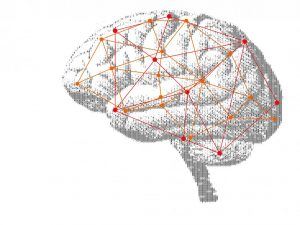Andrew Smith in MIL:
 I remember the moment when code began to interest me. It was the tail end of 2013 and a cult was forming around a mysterious “crypto-currency” called bitcoin in the excitable tech quarters of London, New York and San Francisco. None of the editors I spoke to had heard of it – very few people had back then – but eventually one of them commissioned me to write the first British magazine piece on the subject. The story is now well known. The system’s pseudonymous creator, Satoshi Nakamoto, had appeared out of nowhere, dropped his ingenious system of near-anonymous, decentralised money into the world, then vanished, leaving only a handful of writings and 100,000 lines of code as clues to his identity. Not much to go on. Yet while reporting the piece, I was astonished to find other programmers approaching Satoshi’s code like literary critics, drawing conclusions about his likely age, background, personality and motivation from his style and approach. Even his choice of programming language – C++ – generated intrigue. Though difficult to use, it is lean, fast and predictable. Programmers choose languages the way civilians choose where to live and some experts suspected Satoshi of not being “native” to C++. By the end of my investigation I felt that I knew this shadowy character and tingled with curiosity about the coder’s art. For the very first time I began to suspect that coding really was an art, and would reward examination.
I remember the moment when code began to interest me. It was the tail end of 2013 and a cult was forming around a mysterious “crypto-currency” called bitcoin in the excitable tech quarters of London, New York and San Francisco. None of the editors I spoke to had heard of it – very few people had back then – but eventually one of them commissioned me to write the first British magazine piece on the subject. The story is now well known. The system’s pseudonymous creator, Satoshi Nakamoto, had appeared out of nowhere, dropped his ingenious system of near-anonymous, decentralised money into the world, then vanished, leaving only a handful of writings and 100,000 lines of code as clues to his identity. Not much to go on. Yet while reporting the piece, I was astonished to find other programmers approaching Satoshi’s code like literary critics, drawing conclusions about his likely age, background, personality and motivation from his style and approach. Even his choice of programming language – C++ – generated intrigue. Though difficult to use, it is lean, fast and predictable. Programmers choose languages the way civilians choose where to live and some experts suspected Satoshi of not being “native” to C++. By the end of my investigation I felt that I knew this shadowy character and tingled with curiosity about the coder’s art. For the very first time I began to suspect that coding really was an art, and would reward examination.
Machines drove the first Industrial Revolution. The power of the one roiling our world now lies not in silicon and brushed steel but in a teeming cosmos of software: the code conjured by an invisible cadre of programmers. Unlike the achievements of previous revolutions, what code does is near impossible for most people to understand. Museums around the world memorialise the age of steam; picture books explain to children how engines work. It is hard to imagine how you might curate an exhibition on the age of code. Yet though most of us barely give it a thought, our relationship with code has become symbiotic, governing nearly every aspect of our lives. The accelerator in your new car no longer has any physical connection to the throttle – the motion of your foot will be converted into binary numbers by some of the 100m lines of code that tell the vehicle what to do. Turn on your TV or radio, use a credit card, check in a bag at the airport, change the temperature in your fridge, get an X-ray at the dentist, text a family member, listen to music on anything other than vinyl or read this article online and each of your desires will be fulfilled by code. You may think you’re wedded to your iPhone – what you really love is the bewitching code that lies within it.
More here.
